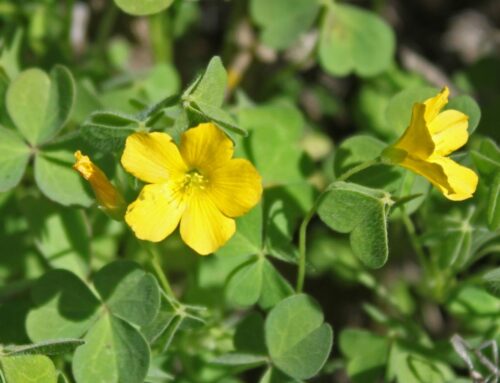Traditionally, acidic soil is treated with lime, to bring it closer to a neutral pH.
![]()

By Kate Russell

Kate Russell
Plants grow in soil. Soil has a pH. Soil pH can make or break your plants’ ability to absorb nutrients and thrive in your Gilroy garden.
Soil (and everything else) is either acidic, alkaline, or somewhere in between. The pH scale ranges from 0 to 14. Lower numbers tell us something is acidic. Higher numbers indicate alkalinity. In the middle, 7.0 is neutral. You can test your soil pH with inexpensive DIY kits or reusable pH meters. Testing will tell you if your soil is neutral (7.0), alkaline (greater than 7.0), or acidic (less than 7.0). Odds are high that your Gilroy soil is alkaline clay.
Plants grow best when they have access to all of the nutrients they use to grow and reproduce. At certain pH levels, some nutrients become unavailable. Plants simply cannot absorb what they need, even when there’s plenty in the soil if the pH is wrong. At the same time, soil microbes, which help plants absorb nutrients, are also restricted by certain pH extremes. And some plants, such as blueberries, prefer more acidic soil.
Using a chart that can be found at www.en.wikipedia.org/wiki/File:Soil_pH_effect_on_nutrient_availability.svg, you can see that more nutrients are available, and there is greater microbe activity when soil pH is between 6.0 and 7.0. Most plants can survive in soil pH from 5.2 to 7.8, but the narrower range allows plants to better thrive.
 Soil pH is, for the most part, a function of local bedrock material. This isn’t going to change any time soon. What you can do is integrate certain practices into your normal gardening routine that will temporarily alter soil pH.
Soil pH is, for the most part, a function of local bedrock material. This isn’t going to change any time soon. What you can do is integrate certain practices into your normal gardening routine that will temporarily alter soil pH.
East of the Rocky Mountains, the soil tends to be more acidic; west of the Rockies, the soil is more alkaline. Traditionally, acidic soil is treated with lime, to bring it closer to a neutral pH.
If your soil pH is too low, you can acidify it with sulfur. Some people claim that adding peat moss or pine needles to the soil can increase its acidity, but research has not shown this to be true. Unfortunately, altering pH takes time and repetition to see any results. Also, it is more difficult to alter the pH of clay soils. Once you begin treating your soil, it is important to continue monitoring pH levels.
 The chemicals found in your tap water also have an impact on your plant’s health. Gilroy and Morgan Hill tap water has a pH range of 7.0 to 8.7. If you have alkaline soil and alkaline water, it can hurt your plants’ ability to absorb certain nutrients.
The chemicals found in your tap water also have an impact on your plant’s health. Gilroy and Morgan Hill tap water has a pH range of 7.0 to 8.7. If you have alkaline soil and alkaline water, it can hurt your plants’ ability to absorb certain nutrients.
In the long run, a soil pH of 5.5 to 7.0 will help your plants become healthier and your vegetables more productive.
Enjoy your gardening!




